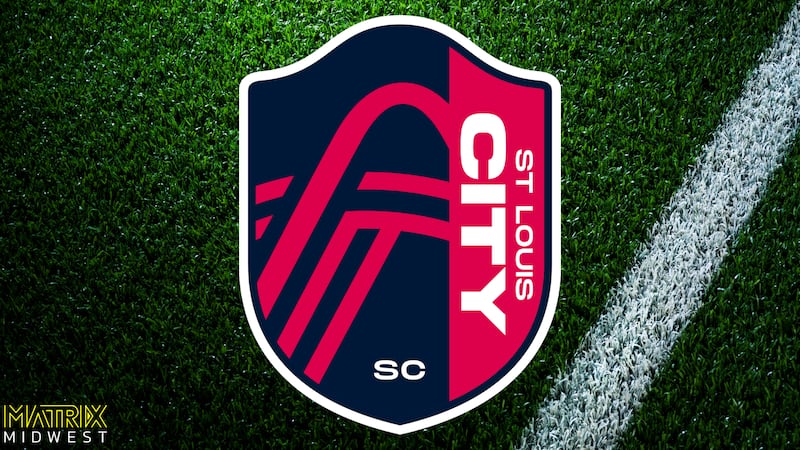Gateway to Equality: Missouri’s first minority-owned bank
ST. LOUIS, Mo. (First Alert 4) - Martin Luther King Jr.’s March on Washington in 1963, and Jackie Robinson’s major league debut in 1947. Those were big milestones engrained in Black history and in American history. They paved the way for other change, holding just as much weight. One of those changes Percy Green was a part of.
“There’s been struggle that brought about change, but it’s almost like it’s invisible,” Green said. “What goes through my mind is how much of this is still unknown from most communities, both Black and white. They know more about Jackie Robinson and his situation with the Brooklyn Dodgers than the Jefferson Bank Protest here in the city of St. Louis.”
The protests were priceless snapshots in St. Louis history that are still vivid memories for Green. He was on the front lines, fighting for civil rights, and a key part of the Jefferson Bank Protests in the 1960s.
“Prior to that time, there was an incident in East St. Louis pertaining to the banks. They were protesting that the banks were not making loans to Black businesses, and not servicing the Black community there,” he said.
Green was a member of the Congress of Racial Equality, or CORE, and says it raised the question about Jefferson Bank in St. Louis. The bank had moved from a mostly Black community to a predominantly white area.
“CORE sent some representatives to the bank to inquire about Black employment only to learn Jefferson Bank had moved,” said Green. “And whatever few Blacks that they had were no longer there, causing CORE to make a demand of four Black tellers.”
The bank refused, sparking the Jefferson Bank Protests on August 30, 1963.
“We conducted a daily picket line there at the bank,“ Green said.
It was roughly 17 weeks of protests, where 19 Black and white protesters were arrested. In January 1964, the bank gave in hiring four Black workers, and sparking a domino effect for St. Louis’ civil rights movement. It led to Green scaling the Arch in protest.
“That happened on July 14, 1964,” said Green.
Construction of the Arch started in 1960, but when Green and others found no Black contractors were working the job, they questioned the general contractor, who said they couldn’t find any “qualified” Black people.
“Eventually, our discussion broke down and we decided that we had to carry some form of direct action,” Green added.
Though Green lost his job, his fight for equality persevered.
“As a result of protest, especially civil disobedience, I saw a change,” he said.
After that, talks about developing a Black bank arose.
“African Americans were not being served, so because of that, it made it difficult to buy a home, start a business or get a car. On top of that, it was harder to find employment because back then, banks were not hiring African Americans for white-collar professional positions,” said Dorothy Bell, Senior Vice-President of Communications for St. Louis Community Credit Union.
That’s where St. Louis native, Vashon High School and SLU grad, George Montgomery comes in. His daughter, Kelly Montgomery, is continuing to tell his story today.
“He gathered group minority leaders that were in St. Louis, and they had those initial meetings in his living room. They pulled their heads together, and they developed their plan,” said Montgomery.
The founders, with backgrounds from business to medicine, started Gateway National Bank, the first and only minority-owned commercial bank in Missouri, in June 1965.
She re her first experiences at the bank fondly.
“My dad brought me (to the bank) when I was 16 years old, and I opened up my first checking and saving at Gateway National Bank,” said Montgomery. “And, he had told me that this was the bank that he founded, so I knew then my dad was something special.”
Gateway Bank operated until 2009, when the bank fell on hard times and was bought by the Central Bank of Kansas City. Then, in 2012, the bank announced its closure.
“It was something we knew we wanted to get in and save because the residents of North St. Louis really deserved that,” said Bell.
In 2016, the bank opened back up as St. Louis Community Credit Union, with a goal to preserve Gateway’s history.
“We have a monument plaque that promotes and talks about Gateway. It contains the original bricks that came from the original building,” Bell added.
On the inside, it’s a love letter to the founders.
“When you go into our lobby, we have a display of the courageous founders up for everyone to see,” she said.
Today, the credit union is recognized as one of the nation’s largest Black-owned minority depository institutions.
“Everyone deserves, no matter what your zip code is, no matter color your skin is, everyone deserves to have access to financial dignity,” said Bell.
More than 60 percent of their hip is people of color, though, past historical inequities still ring loud. In fact, Black families own about 23 cents for every dollar of white family wealth on average.
“So that racial wealth divide is real,” said Bell.
The work to bridge that divide continues, but the foundation’s been set.
“For me personally, standing on the shoulders of people who came before us speaks volumes. They made it easier for us to pave the way, so we could reach back and do the same,” Bell added.
It’s everything Green and others fought for.
“I think that what has been accomplished I’m satisfied with to a great degree,” said Green.
Copyright 2025 KMOV. All rights reserved.













